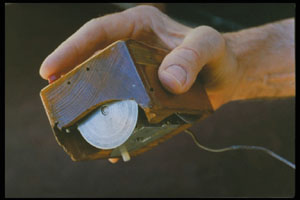I do not own a desktop computer and have not for nearly seven years. Before that, my primary computer was a Dell desktop that my parents bought me as a college graduation present that I augmented with a small notebook computer (at a time when such small laptops were just a novelty).
Even without a desktop computer, my life is full of peripheral devices. Laptops these days are so powerful that most can easily accommodate an additional monitor (if not two), and working in this way usually requires a detached keyboard and mouse.
Today, my mouse’s batteries died. Unlike my keyboard, which is solar powered, my mouse runs on rechargeable batteries, and I often forget to recharge them. When I do, I’m left with just my laptop’s trackpad and a sense of frustration.
Perhaps because I’m in a more forgiving mood today, or I’ve had the proper amount of coffee, my knee-jerk reaction was less frustration and more general amazement at the pace of technology. The mouse is a perfect example.
In 1964, Douglas Engelbart (an Oregon State University graduate!), developed the first public prototype of a mouse. Pictured below, the mouse was a crude thing, just a wooden box with two wheels to manage direction in a linear plane. While other mouse-like devices had been created, they were mostly military inventions and so out of the public light. Engelbart’s device was the first publicly patented mouse, and was decades ahead of its time.

In fact, it was so far ahead of its time that Mr. Engelbart never saw a dime for his creation. The patent expired before such peripherals became widely used. This was before the common operating system patterns that we see today (applications with windows and a cursor to manage a graphical interface); illustrating the vision of our early computer pioneers.
Amazingly, while the technology behind the mouse has advanced (mine uses an infrared laser that a sensor uses to track motion as opposed to a wheel or ball), the basic functionality remains. Instead of moving to different patterns of touch devices or even virtual reality, the vast majority of personal computer users find themselves shackled to a mouse to move a cursor through virtual space.
This notion is one that I’ve encountered countless times in the realm of technology. Yes, most American citizens now have the computational equivalent of super-computers in our pockets. Yes, those devices connect us to more people than at any other point in history. Yet what do we do with these devices? By and large, we use them to communicate and find information.
Is this process better than 25 years ago? Absolutely. Is the paradigm somehow vastly different? No – the problems remain the same, as do the solutions. It’s the medium that we use to get to those solutions that has become different.
This is not to say that such advances are trivial or not worth our adoration. I love my mouse. Much like I love a bridge can improve my commute from 30 minutes to 20. These are significant and worthwhile changes. But it’s a good reminder that while things change (and change at a rapid pace), they often remain the same.